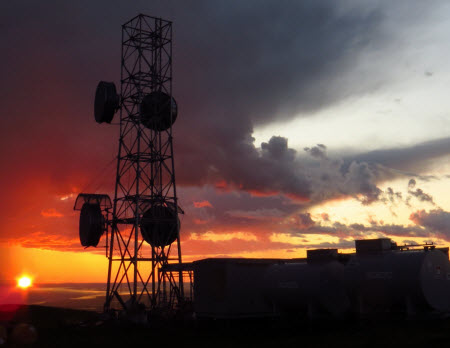GCI Targets 17 Rural Communities for 2021 Broadband Upgrades
11 areas to get LTE upgrades, six to receive broadband for first time as part of federal plan

As the broadband fate of rural communities nationwide remains in limbo in the wake of the apparent compromise concerning President Biden’s $65 billion broadband initiative, one rural telecom company -- GCI -- said it plans to connect 17 remote areas of Alaska this year using funds from the five-year old $1.5 billion Alaska Plan to bring high-speed internet to the frontier.
Earlier this week, President Biden announced he had reached a compromise with Senate Republicans concerning his overall infrastructure plan, which would pump nearly $600 billion of federal funds to build bridges, roads, and fund environmental remediation and other projects, including earmarking $65 billion to bring broadband service to rural communities. Initially the broadband component was to include increasing funding for municipal broadband projects, but where the money will go is still somewhat up in the air. Republicans have taken a harsher stance on muni broadband -- some have tried to eliminate it all together -- and some reports have said it is unlikely that they would have agreed to give municipalities priority over private providers.
Also Read: Building Out Broadband: Look Before You Leap
In the meantime, GCI said 11 communities -- Kodiak, Nome, Valdez, Kotzebue, Tok, Dillingham, Manokotak, Aleknagik, Clark’s Point, Becker Ridge, and Fritz Creek -- will receive faster wireless service via LTE upgrades this year. Another six communities -- Nikolai, Lime Village, Rampart, Central, Lake Minchumina, and Takotna -- will get terrestrial internet service for the first time.
The news comes weeks after GCI said it would deploy 2 Gigabit per second service to 77% of residents in the state in 2022 and that it is on track to provide 10 Gbps service in the next five years. .
Also Read: Broadband Infusion in Biden Plan Faces Challenges
The Federal Communications Commission’s Alaska Plan was created in 2016 to allocate $1.5 billion over ten years to carriers to maintain, extend, and upgrade broadband service across certain areas of the state. GCI was one of 15 carriers and their eight wireless affiliates to sign on to the plan back in 2016.
Multichannel Newsletter
The smarter way to stay on top of the multichannel video marketplace. Sign up below.
Also Read: More Muni, More Money
According to GCI, the federal funding helps make rural investment and maintenance possible in extremely remote, costly and difficult-to-serve communities. GCI, along with other Alaska providers, receives a portion of Alaska Plan funding each year.
“As technology evolves, access to reliable connectivity is more crucial than ever, especially for those who live in remote communities,” GCI senior director of regulatory affairs Juliana Wayman said in a press release. “Through GCI’s Alaska Plan projects, more Alaskans can stay connected in their homes and on-the-go with wireless devices. Increased connectivity also expands entertainment options and enables Alaskans to grow small business opportunities, access online government services, and keep in touch with friends and family.”
So far, GCI said the plan has helped 79,000 rural Alaskans in 105 communities gain access to faster data speeds and improved broadband service.
Also Read: Cable’s Last Frontier
“While GCI is a key provider of wireless and wireline services throughout rural Alaska, we can’t do it alone,” Wayman said in the press release. “With the leadership of the Alaska Telecom Association, support from Alaska’s federal delegation and the dedication of 16 other providers across the state, keeping Alaskans connected is a group effort requiring innovative solutions to serve a state unlike any other. Through that collaboration, it’s our goal to be good stewards of Alaska Plan funding and investment so we are able to expand broadband access and better connect rural Alaska and close the digital divide.”
Mike Farrell is senior content producer, finance for Multichannel News/B+C, covering finance, operations and M&A at cable operators and networks across the industry. He joined Multichannel News in September 1998 and has written about major deals and top players in the business ever since. He also writes the On The Money blog, offering deeper dives into a wide variety of topics including, retransmission consent, regional sports networks,and streaming video. In 2015 he won the Jesse H. Neal Award for Best Profile, an in-depth look at the Syfy Network’s Sharknado franchise and its impact on the industry.

